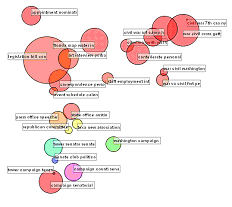The recent news from Iraq about the possible misuse of white phosphorus by US troops in Falluja has an interesting bloggin angle. The BBC News story by Paul Reynolds, White phosphorus: weapon on the edge (16 Nov. 2005) mentions how bloggers forced the Pentagon to admit they had used white phosphorus, despite denying it before when RAI first broke the story. Here is a quote:
This line however crumbled when bloggers (whose influence must not be under-estimated these days) ferreted out an article published by the US Army’s Field Artillery Magazine in its issue of March/April this year.
Setting aside the serious issues raised by this revelation, it is interesting how bloggers are taking on the role of public researchers – chasing down contradictions that the media don’t have the time to. Blogs are often presented as opinion, but in this case it was the research that made a difference.
 The
The